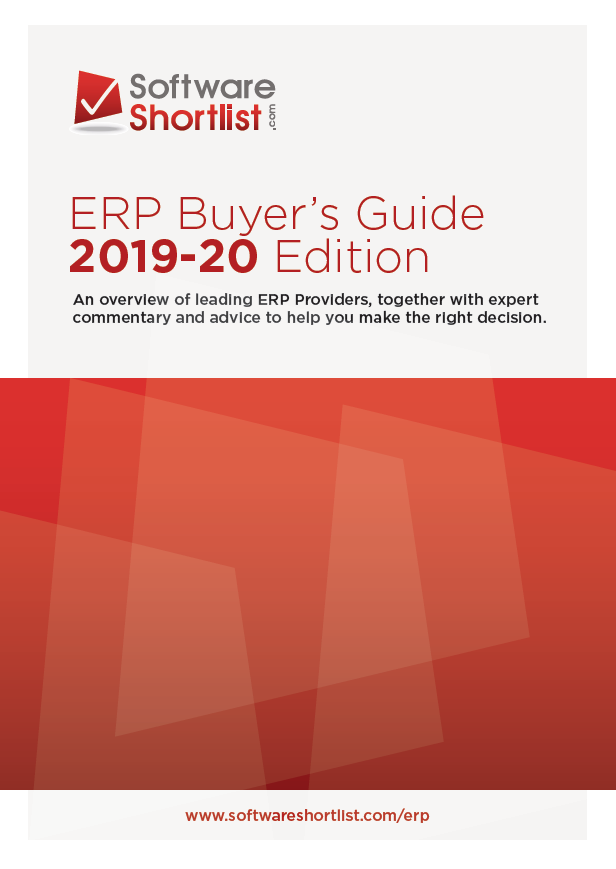Introduction
The processes of make-to-order and make-to-stock are similar at first sight. The major difference is that in make-to-order, production orders are linked to one or more sales orders whereas in make-to-stock production, orders are the result of production planning, which in turn is based on a sales prognosis.
Let us have a look at make-to-order first and see what implications it has for your ERP system, then focus on make-to-stock and finally draw our conclusions.
Make-to-order
Your production orders are driven by the demand created by sales orders. This means that your ERP system must have a strong and intelligent link between its sales order module and the production-planning module. Sales orders must be translated into production orders. You should be able to monitor the progress of individual production orders so that you can keep your customers informed about a particular sales order.
Let us illustrate with an example. A client orders a particular machine. The machine consists of many components listed on a bill of material. Some components are used in different machine models. The sales order is translated with the help of the bill of material into a production request. The production request will be combined with others (if there are any) to make a production schedule. The components for the machine are either to be manufactured or purchased. Some third-party components you keep in stock, others you purchase when needed.
In a make-to-order environment production planning and purchasing can be quite hectic. If you have a ‘pipeline’ of quotes the production planning and purchasing departments can be prepared for things to come, but not if your production planning is totally dependent on the ‘whims’ of your clients. Your ERP system must enable you to be flexible. For instance: delay one order and speed up another.
A risk of make-to-order production is inefficiency and increased wastage. Being flexible also needs to take into account production cycle times and re-tooling of work centers to stop producing one component, and start another. Combining production orders as much as possible and refining the production process to its maximum potential can reduce this risk.
To a certain extent the inventory manager can make sure that much-used components are readily available in stock, but the cost of having everything always in store is often prohibitive. Likewise, your purchasing department must be able to act quickly and look for alternative suppliers fast when a preferred supplier cannot deliver. Just-in-time delivery arrangements must be made beforehand. The purchasing module of the ERP system must have this information readily available.
Make-to-stock
In this case production planning is based on a sales forecast for a certain time, a year, six months or a quarter. The ERP must be able to support the process of making a prognosis by analyzing statistical data and projections based upon historical information. The transformation of a sales forecast to a production plan is roughly similar to that described above.
The advantage of producing for stock is that you are in most cases able to spread the production evenly over a given time period, avoiding most of the hectic scenes that often characterize make-to-order production. There is much room for achieving a highly efficient and effective manner of production.
This does not mean that make-to-stock production is stable and free from erratic movements. Your production planning must be smoothly adjustable to changes in your sales forecast.
An ERP system geared to make-to-stock production can in one aspect make life for your purchasing department easier: purchase orders are issued well in time on the basis of parameters as minimum stock, minimum order quantity and actual need (if the production quota for a particular article has been fulfilled, then the need for certain components will diminish).
Of course, holding finished goods in stock has an implication for your finance team, in that stock represents a balance sheet item that consumes significant capital to hold in anticipation of revenue.
Similarly, a warehouse that needs to handle both component stock and finished goods will need to be larger and more complex, which may trigger the need for specialist Warehouse Management Systems (WMS).
Conclusions
There is a great similarity between the processes but also some important differences that have implications for the capabilities needed in your ERP system.
Make-to-order:
- The ERP system must have a strong and intelligent link between the sales order module and the production process module in order to transfer sales orders into production orders.
- Monitoring of individual production orders must be possible in order to meet the customer’s demands and to keep them informed about the progress of their orders. Production orders must be traced back to sales orders.
- The ERP system must enable highly flexible processing of orders in order to meet irregular sales demands.
- The ERP system should strongly support the inventory manager and the purchasing department, to ensure an uninterrupted flow of components and to keep stocks as low as possible.
- You should take measures to reduce the risk of inefficiency and wastage.
Make-to-stock:
- The ERP system or data analysis tools must have strong statistical capabilities in order to support the sales forecasting process. Of course sales forecasting relies mainly on market expectations and projections but the statistical data provided by the ERP system is useful additional information.
- The sales forecast will be transformed into a production planning, similar as in make-to-order production.
- Make-to-stock leads to an evenly spread production schedule which is good for efficiency and effectiveness.
- However there is still need for flexibility to adjust to suddenly changing market circumstances.
- Purchasing must take into account the projected future need for components in relation to already fulfilled production quota.
- Increased inventory represents a capital cost to the business.
- Holding stock in inventory brings about a need to manage that stock, so warehouse management systems may be needed.
Further reading: Best Practise ERP Selection and Evaluation



